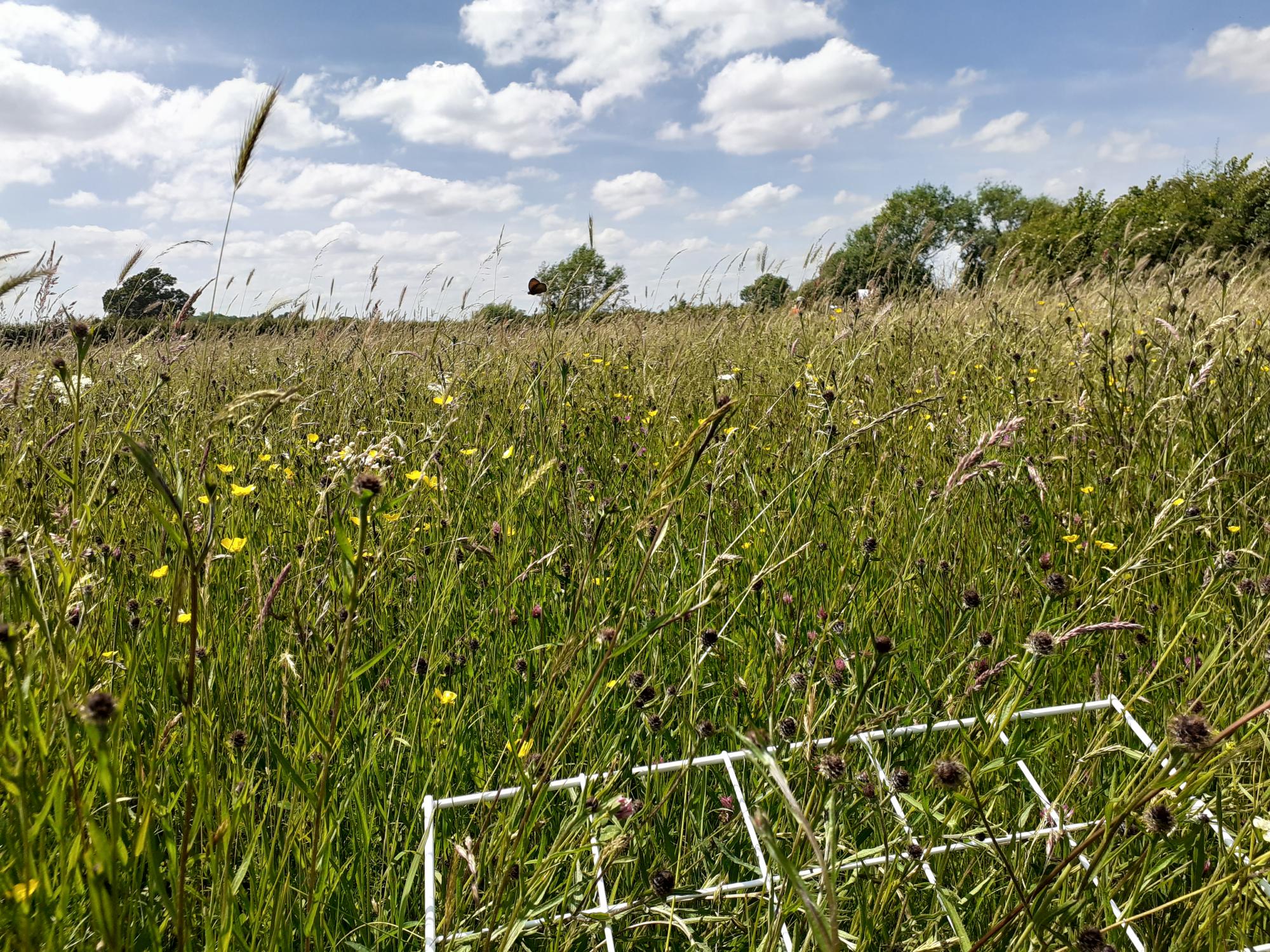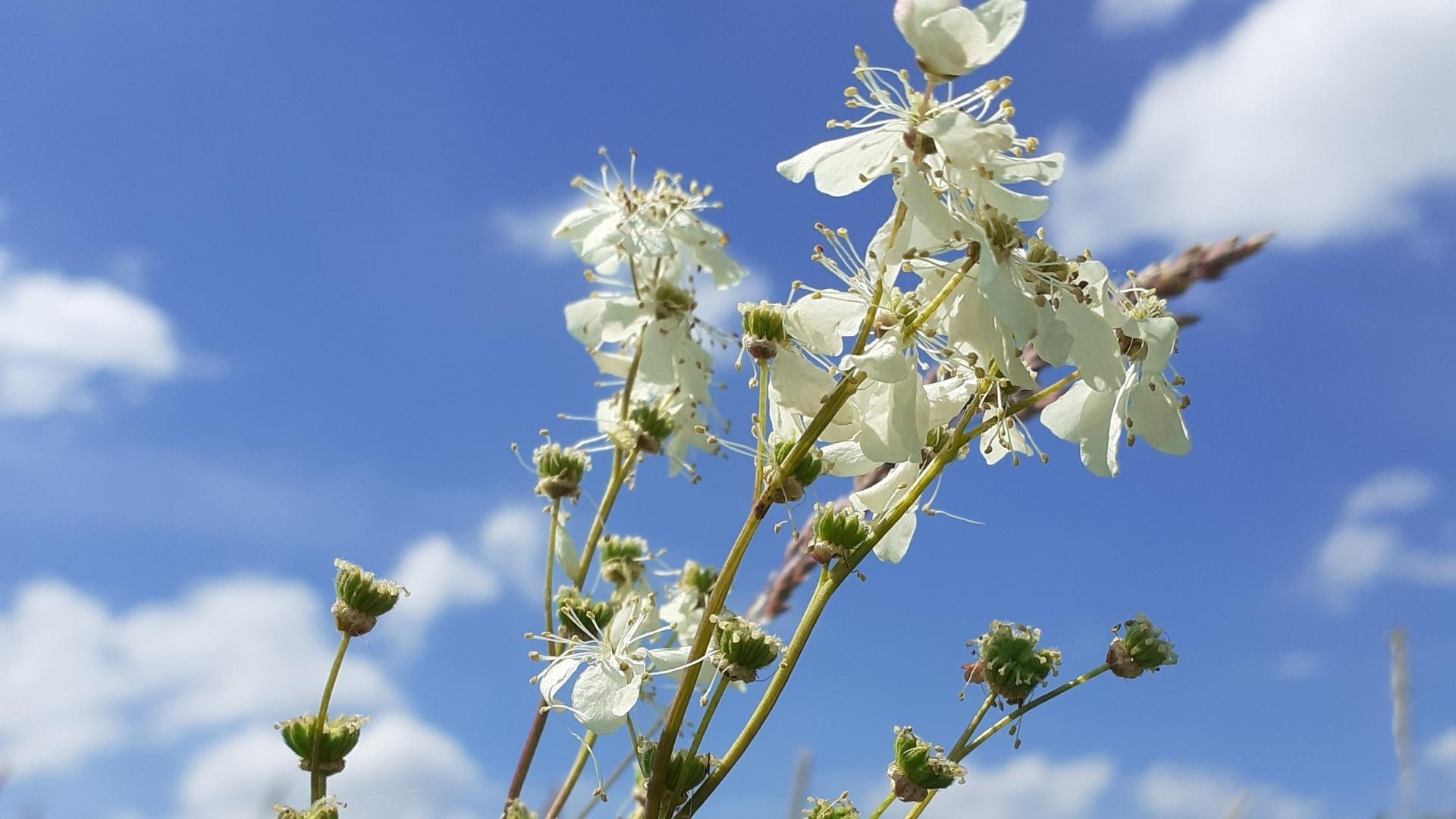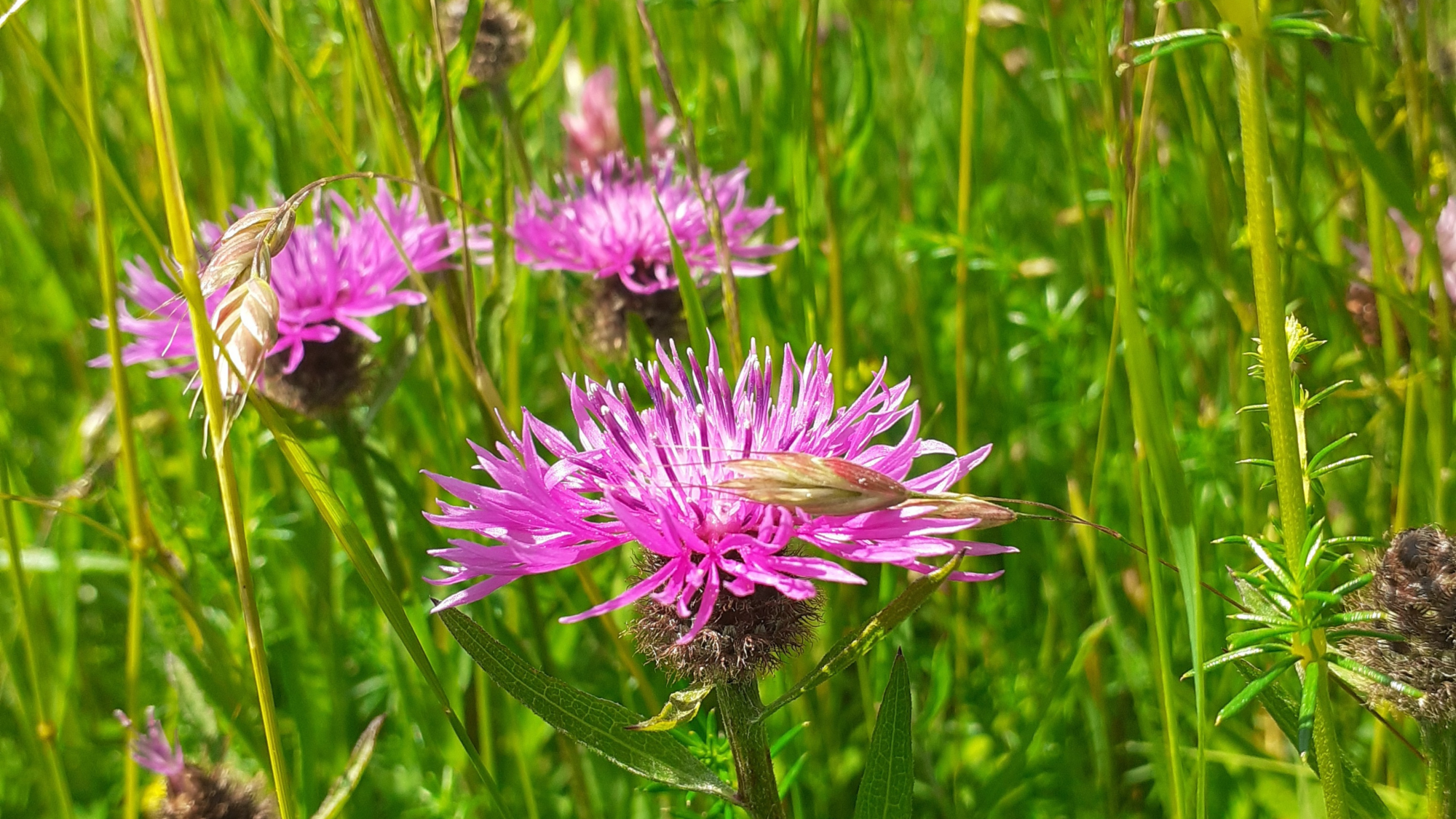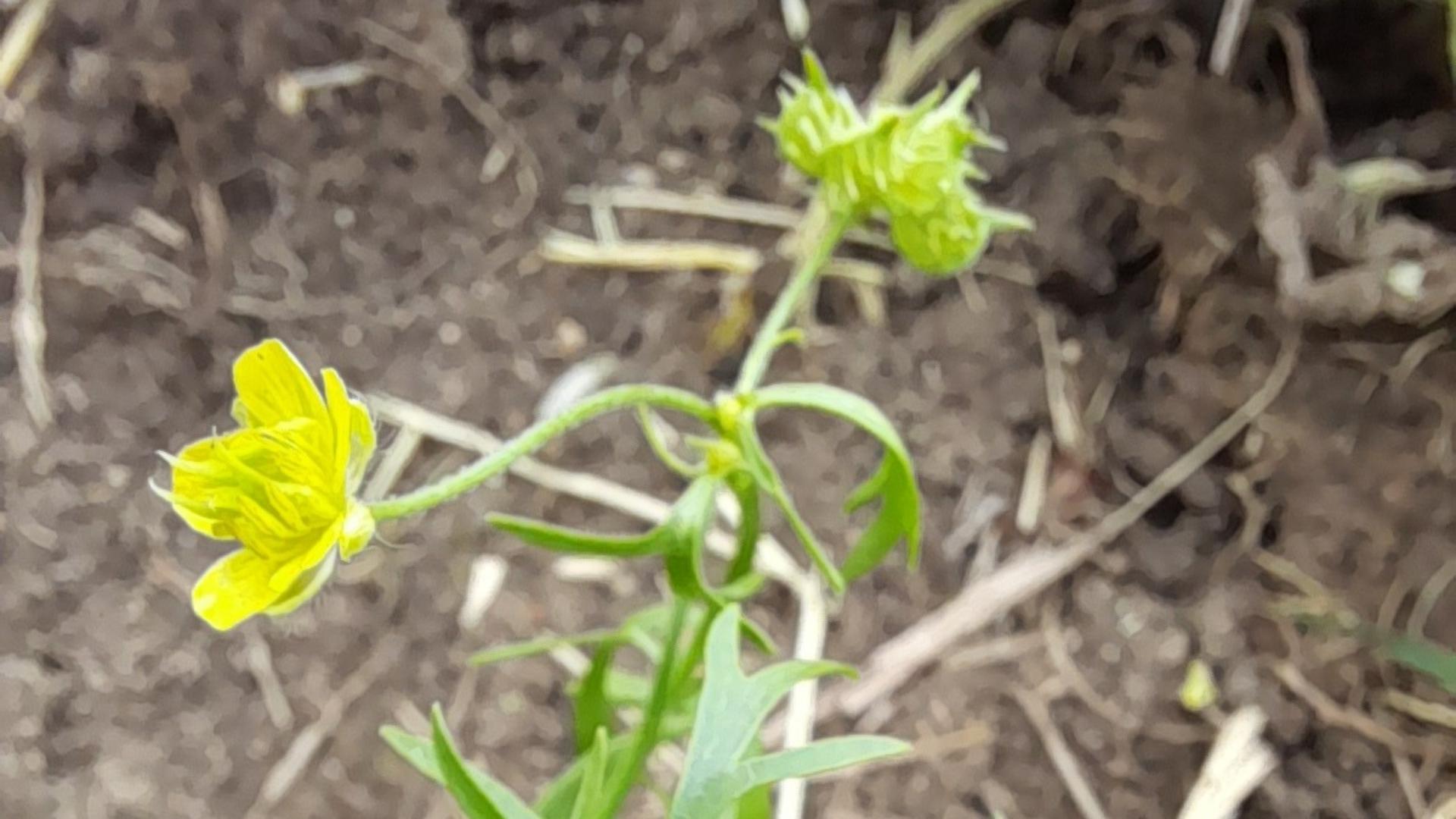
Surveying our grassland diversity
This summer our biodiversity team has been busy surveying some of our more interesting grassland sites, including one of our most exciting and most recent acquisitions at Naunton Beauchamp.
A Site of Special Scientific Interest (SSSI)
Last year we completed the purchase of 57.7 hectares of land at Naunton Beauchamp, which includes 5 hectares classified as a Site of Special Scientific Interest (SSSI), named Naunton Court Meadows. The reason for this special interest is due to its species-rich lowland neutral hay-meadows. In short this means that the sward has a high number of native species per 4m2 (at least 12), high proportion of wildflower species compared with grasses, and positive indicator species characteristic of this type of hay meadow, such as knapweed, crested dog’s tail, and ox-eye daisy.
In “ecology speak,” this is known as an MG5 grassland, which would once have been the predominant form of English lowland hay meadow prior to the 1960s, at which point, large areas of hay meadow began to be drained, fertilised, and ploughed out of existence. In the UK we currently have less than 6,000 hectares left of this type of grassland, which is why these small, fragmented pockets have such national importance.
These types of hay meadow are also internationally important because their particular species composition is confined largely only to the UK, with some pockets in Atlantic lowland France and Spain.

Surveying the hay meadows
At first glance, even without any specialist knowledge, it is easy to see why a hay meadow is something special. In June and July these habitats are buzzing with invertebrate life and awash with colour – pinks, yellows, and whites. An English hay meadow in summer is truly something that everyone should get to spend time in at least once!
Our surveying will help to inform how we manage the meadows in the future, paying particular regard to what percentage of grass to herb (flowering plants) cover there is. We found that the southern (larger) field was more diverse, with at least 20 species of wildflower recorded and a lesser dominance of grass cover. In the northern field, there was still a good wildflower species assemblage (16 species over 12 quadrats, not including grasses), but the sward height was much higher, and grasses dominated more.
Meadow wildflower species
Here are some of the many flower species you can expect to find in the meadows in the Forest.
Green-winged orchid (Anacamptis morio)
The green-winged orchid flowers between May and June, so can easily be missed if visiting the meadows later in the summer. Orchids rely on mycorrhizal fungi (fungi that grow in association with plant roots) to obtain nutrients for them, such as carbon and nitrogen, and they cannot do this on their own. This explains why orchids are unable to survive on grasslands that have been heavily sprayed with pesticide, as this symbiotic relationship is killed off.
Dropwort (Filipendula vulgaris)
Dropwort is closely related to meadowsweet, both of which are in the rose family. Meadowsweet is generally larger, more common, and more closely associated with wetter pasture (which holds true at Naunton Beauchamp, where it is found in the wetter patches of meadow).

Black knapweed (Centaurea nigra)
An iconic species of wildflower meadows, the pink/purple knapweed flower looks a little like a thistle head, but there are no spines on this plant. This is a favourite species of many different species of pollinator, such as moth, butterfly, and bee, including common blue, marbled white and silver-washed fritillary. The flowers on knapweed grow as a composite flower head made up of many smaller ‘florets,’ with linear or lanceolate-shaped leaves. You can see swathes of knapweed around Colletts Pond on the Founder’s waymarked trail which starts at Dorothy’s Wood car park.

Lady’s bedstraw (Galium verum)
A distinctive flower on a couple of our sites, which produces a blossom-like yellow flower head and smells like sweet hay. The name of wildflowers is often telling of their folklore origins and this flower was indeed used as a popular choice for bedding due its soft springiness and hay-like scent when dried out. Lady’s bedstraw was also used in the past to coagulate milk during cheese-making as a precursor to the use of rennet, although the technique of doing so has been lost over the course of time.
Goat’s-beard (Tragopogon pratensis)
Also known as Jack-go-to-bed-at-noon, goat’s-beard is most readily identified by its huge “dandelion clock” seed-head. This alternative name comes from the fact that its yellow flowers will close into a pointed bud by midday. Goat’s-beard flowers between June and August and has long lance-shaped leaves which taper off.

Rare arable wildflower species
In addition to the two SSSI fields at Naunton Beauchamp, there is also an area of former arable land, which holds rare species of conservation value. Contrary to the belief that arable areas are devoid of wildlife, more than 120 species of wildflower can grow in arable habitats, and some of these are Red List species as they are critically endangered. Many of these are plants that have evolved over thousands of years alongside agricultural rotations and need some level of ground disturbance or cultivation to germinate.
Modern farming practices became greatly industrialised in the 20th century, which would have disrupted these plants’ normal relationship with ground disturbance. Arable wildflower species are now often restricted to buffer strips on the very edge of intensively managed arable landscapes, though they do much better in arable areas with lower input of chemicals. One of the troubles faced by arable species is that they are often named as “weeds,” a term that unfortunately demonises certain plants as something to be eradicated, even if they are natively occurring species.

Corn buttercup (Ranunculus arvensis)
One such species that is considered as critically endangered is the corn buttercup, which has declined rapidly over the last 60 years from a formerly widespread population. There are still a few scattered strongholds in the south-west Midlands, Devon, and Suffolk. The most distinguishing feature of this species is the large, oval seedhead covered in spines, which can grow up to 2mm in length.
Stinking chamomile (Anthemis cotula)
With a name like stinking chamomile, it is easy to see why such a species might be overlooked as an undesirable! A pioneer species that is one of the first to appear on disturbed, heavy soils, such as clay and marl, the species is listed as ‘vulnerable’ to extinction because of modern farming techniques such as seed cleaning.
Round-leaved and sharp-leaved fluellen (Kickxia spuria and Kickxia elatine)
Both species of fluellen are poor competitors generally found in perennial and row crops. Round-leaved fluellen generally prefers warmer climates to sharp-leaved, and so is more often found in Southern Britain. These species have delicate flowers with shades of purple and yellow and are often overlooked due to growing close to the ground. This can, however, give them an advantage in setting seed, as they often grow shorter than the combine harvester cutting height.

Wildflower spotting in the Forest
There is no public access yet at Naunton Beauchamp as we are still working with the local farmer who is undertaking sustainable land management practices on the land, but there are plenty of wildflowers to be seen on the walks in the Forest or in your local green spaces.
Learn how to identify them by using our handy wildflowers spotter’s guide.



